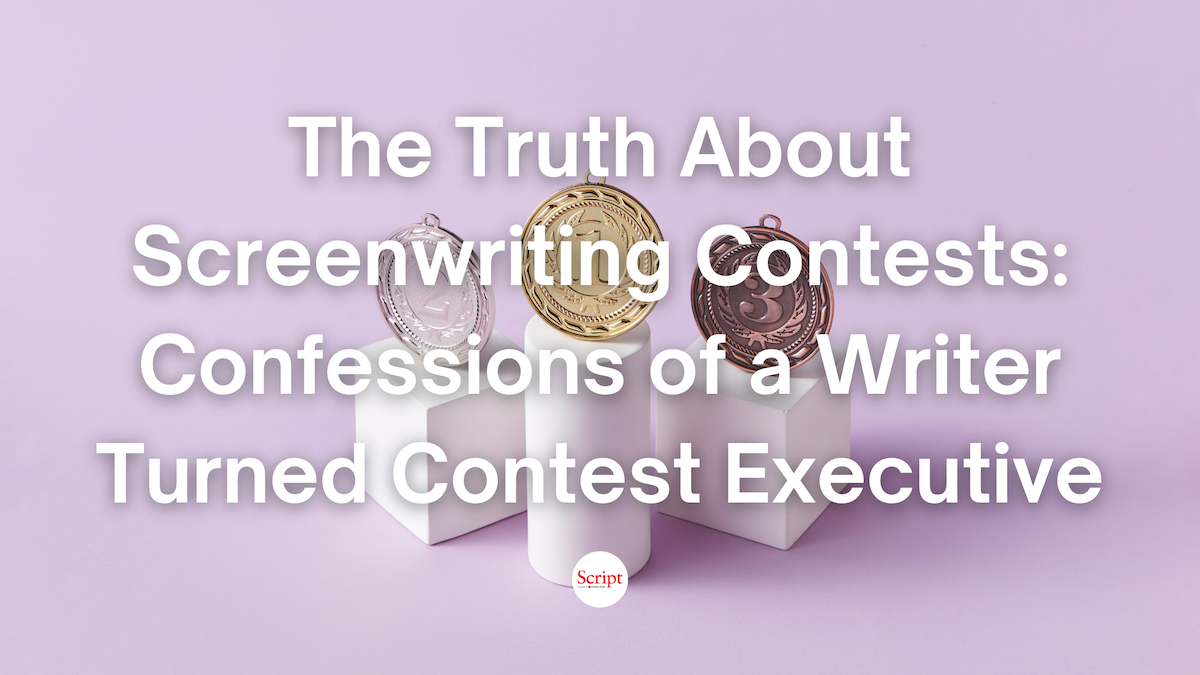WINNIE FOR THE WIN: Recycling Public Domain Characters to Break Into The Biz
A writing sample with a known entity, used legally, can showcase a writer’s unique voice while showing a prospective buyer/director/actor they have what it takes to take pre-existing intellectual property and craft a compelling, original story for a contemporary audience.
I’ll never forget the pearls of wisdom a certain Hollywood agent gifted me when I first hit town hungry for a career in screenwriting. Cinema was in my blood, and I already spoke the language of box office. I knew more than a lot of my peers that there was more to starving for your art to making it in such a cut-throat industry. I was determined to do whatever it took to get into the business, and I hoped meeting with a real-live literary rep I could finally put everything I’d studied in film school to the test.
So, I drove my little red Honda Civic CX hatchback up Highland Avenue on a summers day to meet the old, albeit still in-the-business agent. And for an overpriced salad and a diet coke (alas, there are no free lunches in Hollywood for broke writers) I got this free side of industry wisdom:
“It’s just like that famous quote from Errol Flynn,” the agent said. “Hollywood has great respect for the dead but none for the living. In this town, what’s old is new, Kid.”
Now, you may be asking yourself: “Errol Flynn? Really? How old was this agent?" Me, on the other hand, I came away from that expensive lunch not only without literary representation but more confused than ever on how exactly to break into this crazy business. It wasn’t until years later, I figured out what the old agent was really saying:
“What was once popular will be so again.”
I found out much later they are words to live by in the entertainment business. Because when you’re trying to get a foothold in Hollywood, it’s a major feat to have your writing stand-out in a crowded field, let alone sell, get produced and distributed. And there’s no better example of that being true than when a fledgling screenwriter/filmmaker takes a popular character of yesteryear and, thanks to said character falling into the public domain and becoming fair game, repackage and bring them to a new generation.
That brings me to New Year’s Day, also known as Public Domain Day. On this special day every January 1, previously copyrighted and protected intellectual property comes of age – usually the life of the creator plus seventy-years – and ultimately becomes the property of the people. This holiday should be on the calendar of every up-and-coming screenwriter on the hunt for the perfect writing sample. Simply put, a writing sample with a known entity, used legally, can showcase a writer’s unique voice while showing a prospective buyer/director/actor they have what it takes to take pre-existing intellectual property and craft a compelling, original story for a contemporary audience.
In most-recent cinematic history, a prime example of breaking-in with this kind of strategy is the low-budget, slasher movie Winnie-the-Pooh: Blood and Honey. That’s right, Pooh Bear became public property and found himself starring in a slasher flick, thanks to British producer, director, writer, and editor, Rhys Frake-Waterfield. Now, I love both horror and camp – but Winnie the Pooh? Doesn’t seem right, even counter-intuitive one could say, for a beloved children’s story protagonist to be repurposed in this way. And yet, when I was young and hungry looking for my break, I would have probably jumped to craft this “logline-in-the-title” spec premise. Even now I must admit: why didn’t I think of that?
For any writer, taking and making the most of reimagining a recognizable character from the past in whatever storyline the limits your imagination can think up – should be a serious writing sample consideration. Why? Because your odds of an industry representative taking the time to read your take, on the off-chance it's actually good enough to be produced, and make the effort to get your writing professionally covered, in my opinion, goes way up. Even if it ends up not being their cup of tea, it can still lead a hungry writer to their first writing assignment. Or, in a perfect world, the writer’s career break comes based on their spec’s ability to be marketed and sold on nostalgia factor alone.
Show business is a business, and Winnie-the-Pooh: Blood and Honey perfectly represents the return-on-investment mentality that made Hollywood what it is today. Judged from a purely dollar-sign metric, this shoe-string horror flick was a clear success. Getting a win like this will put a writer on the map in Los Angeles. Leave the reviews to the critics because it is the public that ultimately decides whether a title makes a profit or not, especially in today’s streaming culture. Now, I certainly won’t be writing a review of Winnie-the-Pooh: Blood and Honey anytime soon but when you’re an up-and-coming scribe – you could do worse to have this as your calling card.
Using the much beloved Pooh Bear as soon as he fell into the public domain was a smart business decision. The classic children’s story character starred in many a generation’s childhood. I remember having a Pooh plush doll complete with a tiny red shirt that adorably exposed his bare, bear midriff. If you had told me back then that my beloved Pooh Bear was destined to star in a horror movie in 2023, I definitely would have said you were crazy. But it turns out old Pooh had enough nostalgia value left in him to launch a slasher movie. The real question for me is: “Did it have to be a slasher-flick?”
Featuring Winnie the Pooh in a slasher movie would inevitably draw attention. Execution of said story, in this instance, was always going to be secondary. But it didn’t have to be. How would you as a screenwriter have used Pooh? Think for a moment what your approach might have been to reimagining the famous children’s fairy tale character. It goes without saying that simply casting Winnie the Pooh in yet another story that takes place alongside the other characters of the hundred-acre wood, including Christopher Robin, would not work on many levels as a satisfying narrative.
First and foremost, it would be immediately compared to the classic works of A.A. Milne and E. A. Shepard, Winnie the Pooh’s creators. Regardless, not all Pooh Bear’s neighbors (more on that below) in the hundred-acre wood have fallen into the public domain along with their favorite honey-pot stealing friend – so a simple retelling of a Winnie the Pooh children’s fairytale would be hopelessly derivative and may actually get one in hot legal waters.
But casting Pooh in a slasher movie? Now, that’s interesting if not inspired, and highly- marketable. One could even say its adaptive qualities lend themselves to the camp-slasher genre, which can be produced on a low-to-no budget production value with financial success. Winnie-the-Pooh: Blood and Honey made $5.2 million at the box office when it was released in early 2023, representing a very healthy profit on the producer’s initial $100,000 investment. Scoff at the movie itself but the filmmaker had a winning strategy, and one that paid off to the point where there are now plans afoot for producing a sequel. And I have absolutely no doubt that Tigger, Pooh’s loveable Tiger-friend who fell into the public domain on January 1, 2024, will be once again alongside him for the ride!
It makes one wonder what Steamboat Willie, the other big name to become fair game on Public Domain Day 2024, will be starring in soon.
Join Jon James Miller, award-winning screenwriter, novelist, and professional story editor, to learn the tools necessary to take advantage of brands and characters everyone knows and loves to shine a limelight on their own original work.
He’ll explain how to bring these characters back to life with unique narrative techniques intended to engage readers and keep them reading. Writers will come away from this webinar with a knowledge of how to incorporate public domain properties and reintroduce them to today’s audiences.
Jon James Miller won Grand Prize of the 2008 AAA Screenplay Contest sponsored by Creative Screenwriting Magazine, the 2009 Golden Brad for Drama and was a finalist in the 2011 Austin Writers Conference and has adapted that script into a novel, Looking for Garbo. Jon co-wrote Adapting Sideways: How To Turn Your Screenplay Into A Publishable Novel (Komenar Publishing), which chronicled the process of adapting his screenplay to a novel. He is represented by Sandra Dijkstra Literary Agency. Follow Jon on Twitter @JonJimMiller.





![The Era of the Multi-Hyphenate: An Interview With Actress, Producer, and Writer Mildred Marie Langford [SERIES]](https://scriptmag.com/uploads/MjAxMDUyMzEwMjg4MjEzMzkz/the-era-of-the-multi-hyphenate-series-script.png?format=auto&optimize=high&width=1440)

![The Era of the Multi-Hyphenate: An Interview With Writer and Filmmaker Mario O. Moreno [SERIES]](https://scriptmag.com/uploads/MjEzMTEyNzA4NjQ2NTc3NjE1/the-era-of-the-multi-hyphenate-series-script-hero.png?format=auto&optimize=high&width=1440)